I recently had the opportunity to spend some quality time with the Lowe SRX 100 (a.k.a., Target HF3, AKG HF-3, and Garex HF-3), a receiver produced in the UK around 1995-96. It’s not know for being a DXing machine, but virtually any Lowe product has a certain nostalgia factor, not to mention, collectability factor. As you can see in the photo on the right, the SR 100 is a very simple receiver, and as such, it’s just the type for which I have a personal affinity.
When I first brought the SRX 100 home and hooked it up, I used the supplied 10 meter antenna wire that Lowe shipped with all of these units when new. The antenna wire has the correct fitting for the antenna connector on the receiver: an RCA type connector, instead of the more common SO-239 or BNC. A bit strange. But nonetheless, I hooked it up, plugged in the supplied AC adaptor, and turned on the radio…to find I received nothing but loud static. I live in a fairly RFI-free house and area, but the supplied antenna was so good at receiving noise that I thought the receiver was “deaf” and broken. I decided to give it another chance: I took the SRX 100 into my radio room and hooked it to my large, external horizontal loop antenna; lo and behold, it came to life! Needless to say, it was a relief. (I later learned that many others have experienced this symptom with the supplied antenna.)
Basics
The SRX 100 receiver coverage is from 30 kHz to 30 MHz, in one-kHz steps. The receiver is a dual-conversion design with the first intermediate frequency at 45 MHz, and the second at 455 kHz. During the past two months of use, I have noticed no serious overloading.
The bandwidth, however, is fixed in AM and SSB–there are none of the wide and narrow settings we’re used to seeing on modern portables, let alone tabletops. I found, though, that for broadcast listening, the AM filter is near ideal so long as no adjacent signals are present. In crowded conditions, you can tune off-frequency to decrease interference unless your desired signal is sandwiched between two others.
The sound quality is a major plus. My unit reminds me very much of the mellow sound I got out of my Palstar R30C; it has almost a tube-like quality. And in my book, that’s a huge compliment.
Tuning around
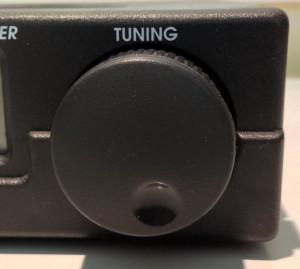 As simple as the Lowe SRX 100 is, tuning it can take practice. First off, the tuning knob is substantial, with a weighted feel–it spins freely and hints of quality workings within. The actual tuning encoder, moreover, is quite clever. I thought it odd that this radio had no band switching–to permit moving from meter band to meter band, or even in 1 MHz increments–instead, it is adaptive, something I hardly recall in a receiver from this era. If you tune the SRX 100 slowly, you will move in 1 kHz increments; speed up, and you can skip in steps of 10, 100 or 1,000 kHz steps. So, if I wanted to move from the tropic lower bands up to 11 meters, one really quick spin will get me there in a second. While this seems intuitive, in practice, any jerky movement of the tuning knob will shoot you right past the desired frequency into the hinterlands.
As simple as the Lowe SRX 100 is, tuning it can take practice. First off, the tuning knob is substantial, with a weighted feel–it spins freely and hints of quality workings within. The actual tuning encoder, moreover, is quite clever. I thought it odd that this radio had no band switching–to permit moving from meter band to meter band, or even in 1 MHz increments–instead, it is adaptive, something I hardly recall in a receiver from this era. If you tune the SRX 100 slowly, you will move in 1 kHz increments; speed up, and you can skip in steps of 10, 100 or 1,000 kHz steps. So, if I wanted to move from the tropic lower bands up to 11 meters, one really quick spin will get me there in a second. While this seems intuitive, in practice, any jerky movement of the tuning knob will shoot you right past the desired frequency into the hinterlands.
Also, 1 kHz increments in single side band can seem like a large tuning step on a modern tabletop radio. The SRX 100 gets around this with its “Clarify” knob, which allows for fine tuning. The LDC display, though, does not reflect any incremental changes with the clarify knob.
Sensitivity-wise, the Lowe SRX 100 is quite respectable in the lower bands, but above 15 MHz or so, started to drop off a bit. Selectivity-wise, you will have no contest grade receiver here. For most broadcast listening, it does quite well, even on medium wave. But on SSB, it’s simply disappointing in crowded conditions. Forget CW listening unless your “internal filter ” (your brain/ears combo) can cope with multiple signals at once.
Every receiver has pros and cons; I started noting them from when I first tuned on the radio:
Pros:
- Simple design–even grandpa can figure out these controls without cracking open the manual
- Nice weighted tuning knob
- Easy to read LCD display (see con)
- Tuning rate is adaptive to spin rate of tuning knob
- Pleasant, mellow audio from its built-in speaker, reminiscent of the Palstar R30 series
- Compact size for a tabletop receiver
- 12 VDC power supply and current are only at 300 mah
- Sturdy metal chassis and build quality excellent
- Attenuator switch (Con: on back of unit)
- Even at time of production, this was a relatively inexpensive tabletop with reasonable performance for price
Cons:
- No adjustable bandwidth
- SSB bandwidth too wide for listening to CW if any adjacent signals are present
- AM too wide if competing station within 5 kHz of either side of desired carrier
- No back lighting on display (see pro)
- Clarifier only marginally effective on SSB signals
- Only 10 memory positions
- Adaptive tuning rate takes practice to become fast and accurate (see pro)
- Non-standard RCA type antenna connector (will require an adapter for most people)
- Supplied 10 meter length of antenna wire with RCA plug is useless in most environments
- No bail
This is a fun little radio! Even thought it’s a tad quirky, it may just be the best shortwave radio for an armchair shortwave radio listener, someone who wants an uber-simple design and small footprint. If you find used one on eBay, or with a company like Universal Radio, it may make a nice working addition to any shortwave radio collection.

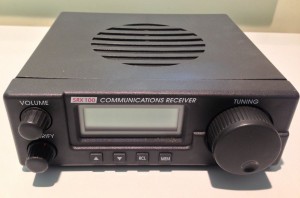
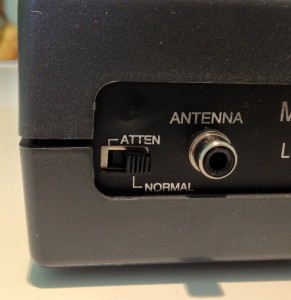
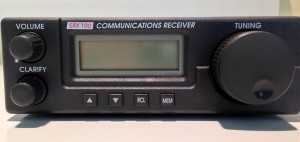
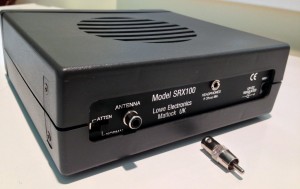
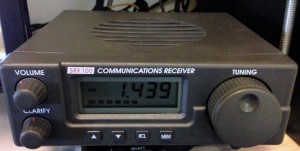
Hello
Does any one have a cct diagram ofvthe srx 100 please
I stumbled across the HF3 / HF3W on another SWLing blog, discussing current in production Tabletop Communications Receivers.
I like to get the heart of the matter – so I did some digging on the internet and found some reviews.
To answer Rob R.’s antenna experience, apparently – according to other reviewers – Rob R.’s experience with the supplied long wire antenna and the available active antenna is due to ambient radio frequency interference (“RFI”) and is best overcome by using a magnetic loop antenna. I’m sorry Rob didn’t have the opportunity to test his unit with a loop…
1. HF3 / HF3W in Production as of 14 July 2022
A compact, simple to use, competitively priced communications receiver still in production today!
For me that’s absolutely splendid news!
The HF3W comes with weather fax PC cable and software.
2. “Lowe SRX100” = HF3
According to the Radio Netherlands review available at MWCircle, see:
https://mwcircle.org/legacy-receiver-reviews/receiver-review-akd-hf3/
a) Apparently the HF3 was originally made by a UK brand “AKD”
b) The HF3 was reportedly sold internationally in markets where AKD did not have a presence by Lowe as the Lowe SRX100 – and it’s easy to see why someone might think the HF3 is connected to the Lowe 150, it has a similar uncluttered form factor.
I haven’t acquired one of these yet, but I look forward to doing so.
I will then do a review….
I stumbled across the HF3 / HF3W on another SWLing blog, discussing current in production Tabletop Communications Receivers.
I like to get to the heart of a matter.
1. HF3 / HF3W in Production as of 14 July 2022
A compact, simple to use, competitively priced communications receiver still in production today!
For me that’s absolutely splendid news!
The HF3W comes with weather fax PC cable and software.
2. “Lowe SRX100” = HF3
According to the Radio Netherlands review available at MWCircle, see:
https://mwcircle.org/legacy-receiver-reviews/receiver-review-akd-hf3/
a) Apparently the HF3 was originally made by a UK brand “AKD”
b) The HF3 was reportedly sold internationally in markets where AKD did not have a presence by Lowe as the Lowe SRX100 – and it’s easy to see why someone might think the HF3 is connected to the Lowe 150, it has a similar uncluttered form factor.
I haven’t acquired one of these yet, but I look forward to doing so.
I will then do a review….
I bought one of these “NASA HF-3” radios a couple of years back and with both the supplied wire antenna and an accessory “active antenna” supposedly designed for this radio, I got virtually nothing except loud buzzing over a number of days. I had to return it, and as I’d bought it from a supplier in the U.K., I didn’t want to pay the shipping on a replacement (which might’ve been the same).
Shame, as I wanted to like it, but… nope.
Hi Thomas,
If they are no longer produced, at Ebay and many other websites you find many of them (Nasa Target HF3) as NEW with guarantee…So how is this possible??
Wow–I had no idea! I suppose someone purchased the license to make these Lowe units rebadged under the NASA name and started reproducing them. I’m amazed. Thanks for bringing this to my attention. I suppose these may have been surplus stock. Might be worth asking a seller.
-Thomas
After a quick google and ebay search, it looks like this radio is still being cranked out by someone and being sold under various brands; Nasa and Clipper are two I’ve found so far. I wonder if the quality is the same as when it was under the Lowe brand?
Ken
A little more research found this:
http://www.mds975.co.uk/Content/akdhf3.html
According to this article, Lowe rebadged this from an outfit called AKD.
Ken
Nice and good review 🙂
Today they are on Ebay Nasa Target HF3 for sale…So my question: Are they new or just old??
Hi, Laura,
These are no longer produced, so they are all in some stated of used condition.
-Thomas
I bought an SRX100 in the 90s. It was a bare bones rx with reasonable reception. I primarily used it in my car. The 12vDC power input that the receiver required was ideal for this purpose as well as the the way the radio was laid out. It’s simplicity made also made it useful for mobile use despite not having an illuminated displace. The downside of the SRX100 was that it’s plastic case felt cheap and was not firm and sturdy. I also would of preferred a few more memory options. I think new the radio sold for about $200. The dial is so smooth that it is a pleasure to use despite it’s quirkiness. Nice review! I thought everyone had forgotten this radio.